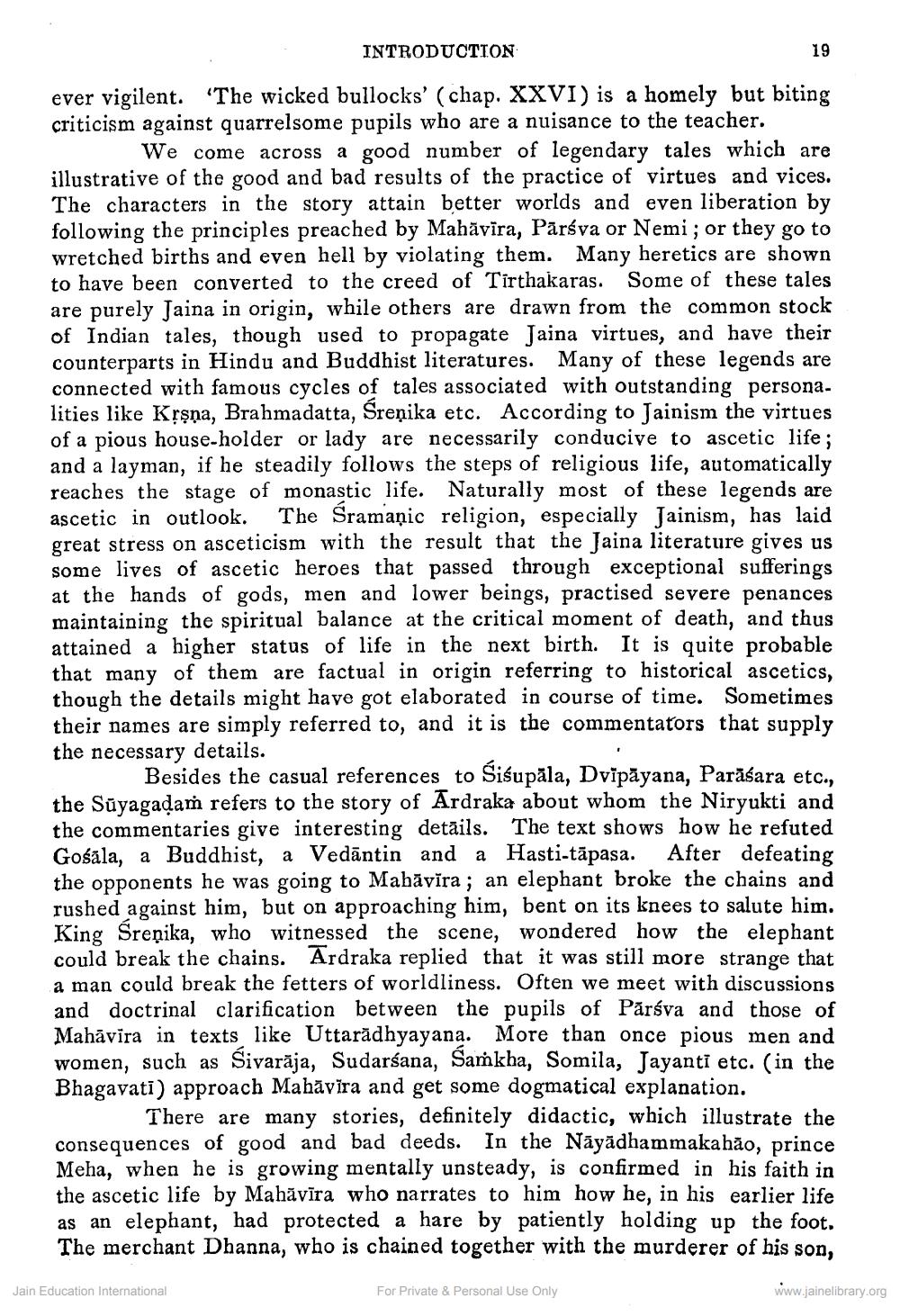________________
INTRODUCTION
19 ever vigilent. 'The wicked bullocks' (chap. XXVI) is a homely but biting criticism against quarrelsome pupils who are a nuisance to the teacher.
We come across a good number of legendary tales which are illustrative of the good and bad results of the practice of virtues and vices. The characters in the story attain better worlds and even liberation by following the principles preached by Mahāvira, Pārśva or Nemi; or they go to wretched births and even hell by violating them. Many heretics are shown to have been converted to the creed of Tirthakaras. Some of these tales
aina in origin, while others are drawn from the common stock of Indian tales, though used to propagate Jaina virtues, and have their counterparts in Hindu and Buddhist literatures. Many of these legends are connected with famous cycles of tales associated with outstanding persona. lities like Krşņa, Brahmadatta, Sreņika etc. According to Jainism the virtues of a pious house-holder or lady are necessarily conducive to ascetic life; and a layman, if he steadily follows the steps of religious life, automatically reaches the stage of monastic life. Naturally most of these legends are ascetic in outlook. The Sramaņic religion, especially Jainism, has laid great stress on asceticism with the result that the Jaina literature gives us some lives of ascetic heroes that passed through exceptional sufferings at the hands of gods, men and lower beings, practised severe penances maintaining the spiritual balance at the critical moment of death, and thus attained a higher status of life in the next birth. It is quite probable that many of them are factual in origin referring to historical ascetics, though the details might have got elaborated in course of time. Sometimes their names are simply referred to, and it is the commentators that supply the necessary details.
Besides the casual references to Siśupāla, Dvīpāyana, Parāśara etc., the Sūyagadam refers to the story of Ardraka about whom the Niryukti and the commentaries give interesting detāils. The text shows how he refuted Gośāla, a Buddhist, a Vedāntin and a Hasti-tāpasa. After defeating the opponents he was going to Mahāvīra; an elephant broke the chains and rushed against him, but on approaching him, bent on its knees to salute him. King Sreņika, who witnessed the scene, wondered how the elephant could break the chains. Ardraka replied that it was still more strange that a man could break the fetters of worldliness. Often we meet with discussions and doctrinal clarification between the pupils of Părśva and those of Mahāvira in texts like Uttaradhyayana. More than once pious men and women, such as Sivarāja, Sudarsana, Samkha, Somila, Jayanti etc. (in the Bhagavati) approach Mahāvīra and get some dogmatical explanation.
There are many stories, definitely didactic, which illustrate the consequences of good and bad deeds. In the Nāyādhammakahão, prince Meha, when he is growing mentally unsteady, is confirmed in his faith in the ascetic life by Mahāvīra who narrates to him how he, in his earlier life as an elephant, had protected a hare by patiently holding up the foot. The merchant Dhanna, who is chained together with the murderer of his son,
Jain Education International
For Private & Personal Use Only
www.jainelibrary.org




